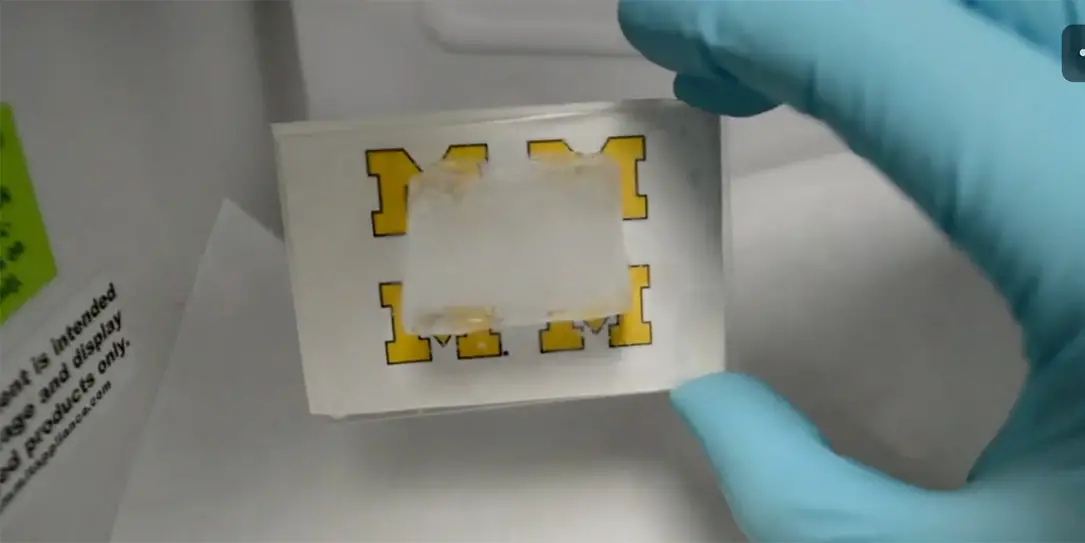University of Michigan researchers have developed a new ice-proof material that could be used to keep ice off planes, power lines and possibly windshields. Ice is both an awesome wonder of nature and a source of frustration and a safety risk to humans. We spend billions of dollars using de-icing agents at airports that are probably not doing our environment any good and we buy similar consumer products for car windshields. This new material has a rubber consistency to it and is very stretchy when pulled, reminding me of 3M command adhesive.
“Researchers had been trying for years to dial down ice adhesion strength with chemistry, making more and more water-repellent surfaces,” said Kevin Golovin, a doctoral student in materials science and engineering. “We’ve discovered a new knob to turn, using physics to change the mechanics of how ice breaks free from a surface.”
“Nobody had explored the idea that rubberiness can reduce ice adhesion,” Tuteja said. “Ice is frozen water, so people assumed that ice-repelling surfaces had to also repel water. That was very limiting.”
The new material can have ice stick to it but the adhesion factor is much less than other materials, making it very easy to remove the ice from the surface. You simply flick the ice with your finger and it falls right off. It remains to be seen how the material could be used on windshields given auto safety regulations, windshield wipers and how the material handles water. Other applications such as freezer insulation, coating airplane wings, and power lines are well within the realm of possibility. Head over to the source link for a good amount of video and more in depth of coverage of this new ice-proof material it is very interesting.
What do you think of this new ice-proof material? Let us know in the comments below or on Twitter, Facebook and Google+.
[button link=”http://phys.org/news/2016-03-spray-on-coating-ice-proof-airplanes-power.html” icon=”fa-external-link” side=”left” target=”blank” color=”285b5e” textcolor=”ffffff”]Source: Phys.Org[/button]Last Updated on January 23, 2017.










